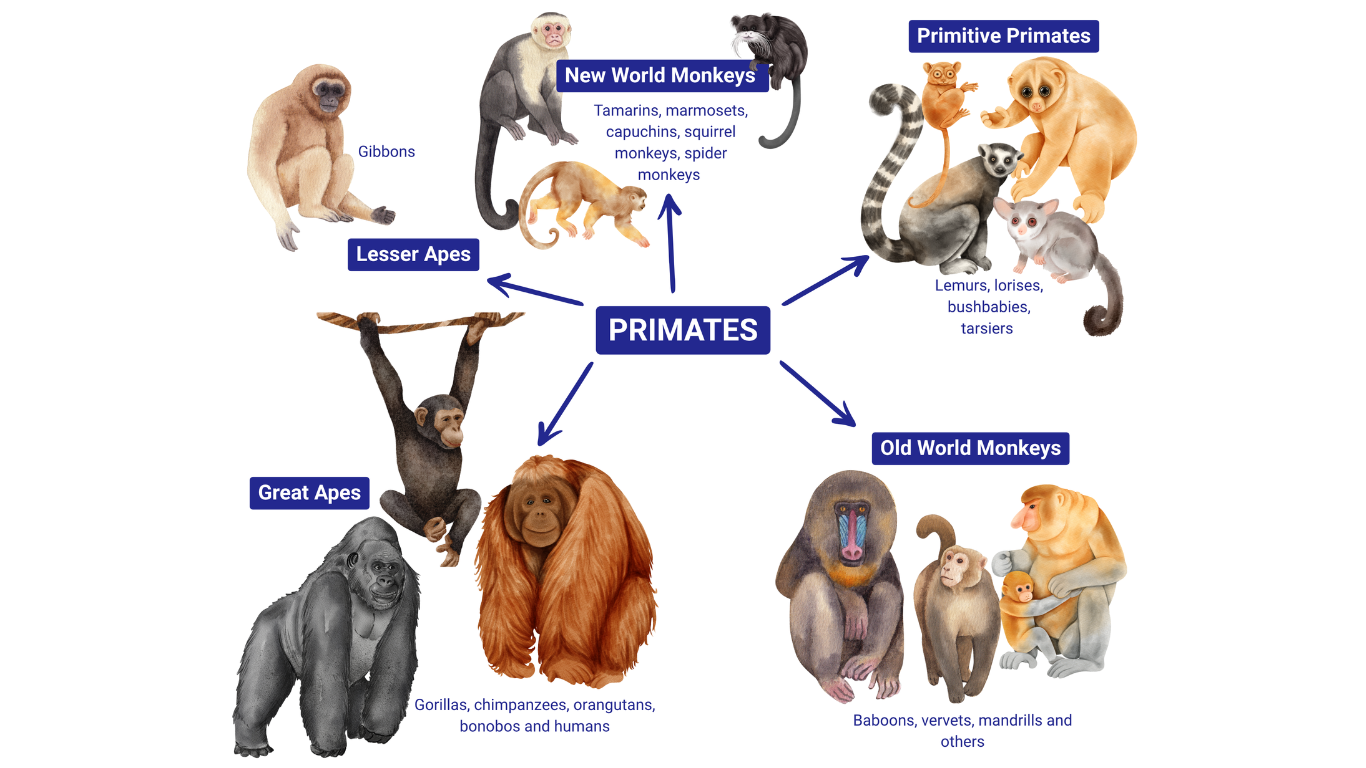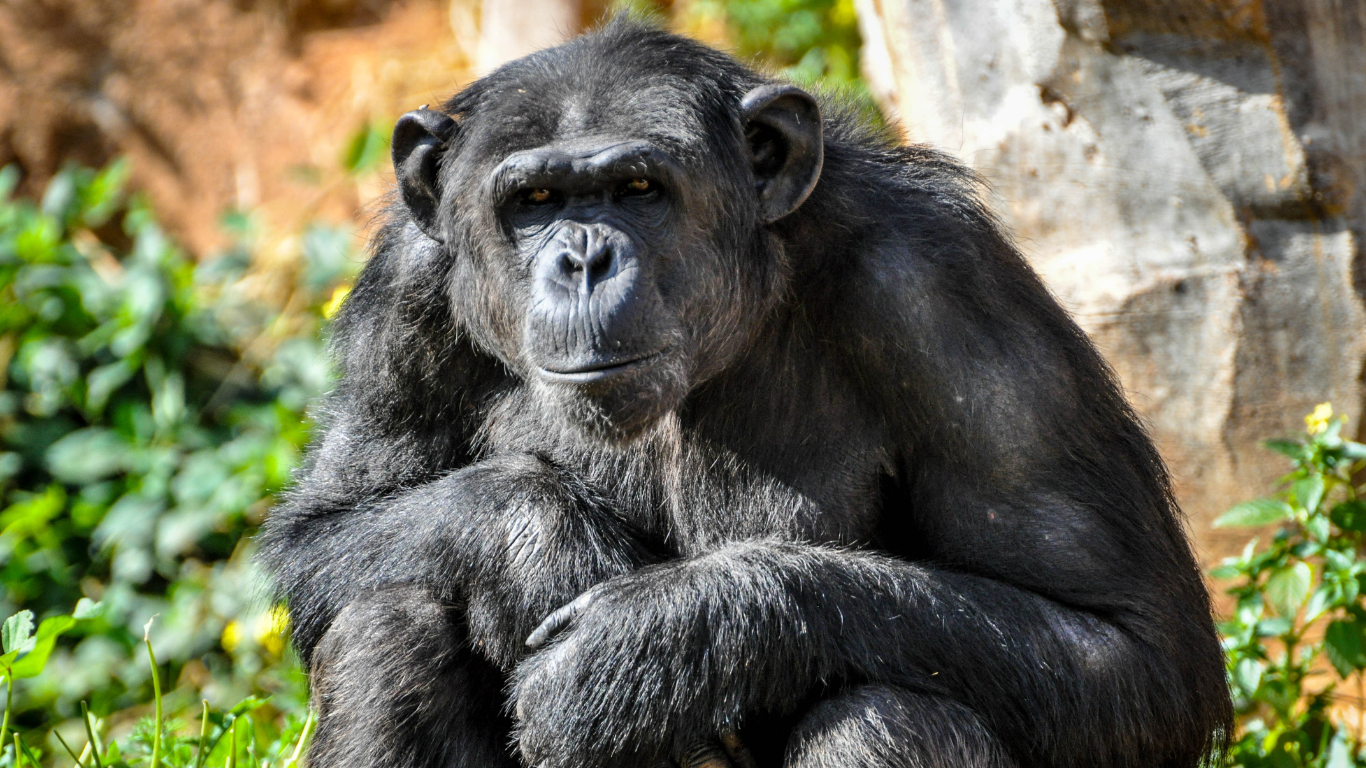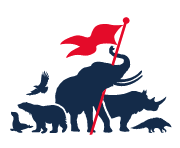Great apes: Not too different from me or you
Across Africa and Asia, the great apes – including eastern and western gorillas, chimpanzees, orangutans and bonobos – are rapidly losing their natural habitats to human activities such as agriculture, mining and commercial logging. As a result, these amazing animals are hurtling towards extinction.
All non-human great ape species are listed as endangered or critically endangered by the International Union for Conservation of Nature (IUCN) Red List.
The problem of actually identifying what a great ape is can make it challenging to protect them. Simply put: How can we protect what we do not know?
Monkeys and apes are both primates, just like humans. You may think that telling the difference between monkeys and apes would be simple – but when looking at a gibbon and a marmoset, it may be hard to distinguish between them.
Before we can have a discussion about great apes and their urgent conservation needs, we must first have a quick look at the science; that is, the classification of primates.
There are two easy ways to distinguish between monkeys and apes:
- Apes do not have tails, but almost all monkeys do.
- Monkeys are generally smaller, and have narrower chests.
The overarching group “apes” is comprised of lesser apes (mostly consisting of gibbons), and great apes. The group “monkeys” includes “old world monkeys” (baboons, mandrills, langurs, vervets, macaques and others) and “new world monkeys” (squirrel monkeys, howler monkeys, spider monkeys, tamarins, marmosets and capuchins).
If that all sounds a bit confusing, check out the easy visual guide below:

The great apes include orangutans, gorillas, chimpanzees, bonobos and human beings. All of us are a part of the same family and share similar traits, such as the use of tools, intelligence, self-awareness, language systems and interpersonal relationships.
It is important to recognize our similarities to other great apes so that we can understand the devastating impact we have had on their quality of life, population numbers and habitats. In learning the ways in which we are similar, we can more easily identify with the struggles of other great apes and the multiple threats they face – all of which stem from human activity.
The great apes face three main threats:
- Habitat destruction (for human settlements and farming)
- Illegal poaching (for bushmeat and wildlife trade)
- Increased spread of diseases (such as Ebola and HIV)

Humans are the cause of all of these threats
The populations of great apes (and indeed all primates) are declining dramatically. Here are some numbers to put this into perspective.
Almost one-fifth of the great ape population was lost between 2005 and 2013 alone.
Gorilla populations are declining by nearly 3 percent every year.
80% of orangutans have been lost in the last century.
In the past 4 decades, 2,000–3,000 orangutans were killed every year in Indonesian Borneo.
There used to be an estimated 1-2 million chimpanzees worldwide in the early 1900s – today, an estimated 300,000 remain.
100% of the great apes fall into either the critically endangered (CR) or endangered (EN) IUCN categories
What can you do?
- Avoid purchasing items with palm oil – palm oil plantations are the largest contributor to habitat loss for orangutans. Palm oil farming is no longer only causing habitat destruction in Indonesia and Malaysia; the huge demand for this product has resulted in plantations being started across Africa as well, futher eroding great ape habitats.
- Reuse, reduce and recycle whenever you can.
- Support international and national laws governing endangered species.
- Recycle old cell phones. Every cellphone contains cobalt, a substance mined in the forests of the Democratic Republic of Congo. The extraction of this mineral leads to major habitat destruction for many species, including chimpanzees and gorillas.
- Read, learn and share what you know about apes and other primates.
You can also donate to Animal Survival International to support our work for great apes and other wild animals. To date, we have helped protect gorillas from poachers in the Congo; prevent COVID-19 from spreading to chimpanzees, orangutans and gorillas during the global pandemic; rushed emergency aid to crucial primate shelters in the wake of devastating fires; fought the illegal primate trade in Asia; and so much more.
With your support, we can continue fighting for wildlife and the planet, protecting apes, monkeys and other precious wild animals.
